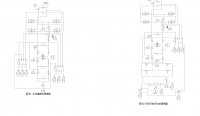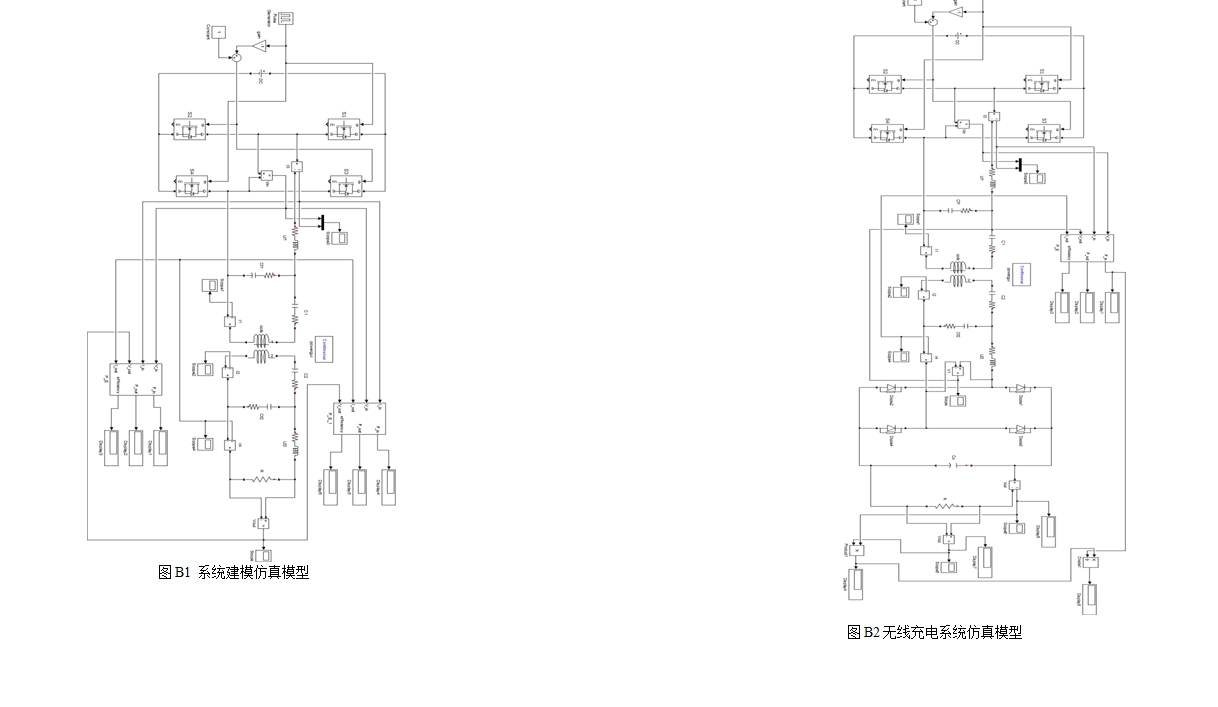无线充电系统建模与参数优化设计

无线充电系统建模与参数优化设计(任务书,开题报告,论文17000字,MATLAB文件)
摘要
电动汽车无线充电的特点是电能的无线传输,具有灵活,方便的优点,与传统的有线充电桩相比,无线充电还可以节约很大的空间。传统的有线充电桩使用的充电线易受腐蚀和侵害,会造成一定的损失,而使用无线充电,则可以避免这种情况的发生,因此无线充电具有非常好的发展前景。
无线电能传输系统是一个高阶非线性,参数之间强耦合,电磁结合的系统。无线充电技术是一个充分利用电力电子技术,电磁学,电路学,现代控制理论,磁场耦合技术的综合技术。因此对系统精确的把握和研究是十分重要的,对无线充电系统的数学建模可以让我们更加深入的理解系统,而参数优化则是在模型的基础上对系统的优化升级,让其更好,满足一定的工程需求。
本文研究的无线充电的对象是电动汽车,主要工作如下:
采用状态空间方程的方法来建立模型,可以对系统进行精准的分析。本文无线充电系统建模是基于一个LCC补偿拓扑结构,建模的具体部分是,在逆变输出端和整流输入端之间,建立起无线充电系统的状态空间方程,选取主要元器件的电流和电压作为状态变量,逆变输出的电压作为状态空间方程的输入量,整流桥前端的输入电压作为状态空间方程的输出量。 [资料来源:www.doc163.com]
采用MATLAB里的fmincon函数来处理这个参数优化问题,在系统的功率和效率之间做多目标寻优。参数优化对系统优化来说是十分重要的,通过fmincon进行局部优化。无线充电系统的参数优化是一个有约束的多元函数优化问题,并且其约束问题一般都是非线性约束。
最后,建立一个SIMULINK仿真模型进行验证。证明系统建模和参数优化结果的正确性和可行性,并验证基于LCC补偿拓扑结构的无线充电系统的输出是恒流源。
关键词:无线电能传输系统;系统建模;参数优化;多目标寻优
ABSTRACT
The characteristics of wireless charging of electric vehicles are wireless power transfer, with flexible and convenient advantages. Compared with the traditional wired charging pile, wireless charging can also save a lot of space. The using wire of traditional wired charging pile is easy to be corroded and infringed, which will cause a certain loss. And using wireless charging, this situation can be avoided, so wireless charging has a wonderful development prospect.
Wireless power transfer system is a high nonlinear, strong coupling between the parameter and the combination of electromagnetic system. The technology of wireless charging is a integrated technology which make full use of the power electronic technology, electromagnetic, circuits, modern control theory, magnetic coupling technology. So accurate grasp and research of the system are very important, and the mathematical modeling of wireless charging system can make us understand the system more, while parameter optimization can the optimize and upgrade system based on the model, which could make it better and meet the demand of engineering.
The object of wireless charging in this paper is electric vehicles, and the main work is as follows:
The method of state space equation to establish the model of the system is adpoted, which system can be analyzed accurately.Modeling wireless charging system is based on a LCC compensation topology in this paper. The specific part of the model is that between the inverter output and the rectifier input, a state-space equation of wireless charging system can be built, the currents and voltages of main components are selected as state variables, the inverter output voltage is input of state space equation, the input voltage of the rectifier bridge front is the output of the state-space equation.
The fmincon function of MATLAB to deal with the parameter optimization problem which is the multi-objective optimization between the power and efficiency of system is adpoted.Parameter optimization optimization is very important for system, and local optimization can be realized by fmincon. Parameter optimization of wireless charging system is a multivariate constrained function optimization problem, and its constraint problems are generally nonlinear constraints. [来源:http://www.doc163.com]
Finally, a SIMULINK simulation model is set up for verification.The correctness and feasibility of the result of system modeling and parameter optimization are proved,and then the output of the wireless charging system based on LCC compensation topology is proved to be constant current source.
Key Words: Wireless Power Transfer System; System Modeling; Parameter Optimization; Multi-Obejective Optimization



目录
第1章绪论 1
1.1 课题研究背景 1
1.2 国内外研究现状 1
1.2.1 无线充电技术的研究现状 1
1.2.2 无线充电系统建模的研究现状 2
1.2.3 参数优化的研究现状 2
1.2.4 约束优化算法的研究现状 3 [资料来源:www.doc163.com]
1.3 课题研究的目的及意义 3
1.4 本文的主要内容 3
第2章 LCC补偿拓扑结构分析 5
2.1 引言 5
2.2 LCC拓扑结构特性分析 5
2.2.1 谐振频率 5
2.2.2 功率因数 7
2.3 软开关的实现 8
2.4 本章小结 8
第3章无线充电系统建模 10
3.1 引言 10
3.2 状态空间表达式的建立 10
3.3 状态方程求解 13
3.3.1 常规方法的缺陷 13
3.3.2 方波复数傅里叶级数分析 13
3.3.3 状态方程的变换 14
3.3.4 稳态分析求解 16
3.4 本章小结 19
第4章参数优化 20
4.1 引言 20
4.2 损耗计算 20
4.2.1 电容损耗计算 20
4.2.2 电感损耗计算 21
[资料来源:Doc163.com]
4.3 目标函数建立 21
4.4 非线性约束条件 22
4.5 参数优化过程及结果 23
4.6 本章小结 24
第5章系统仿真 26
5.1 引言 26
5.2 交流方波产生模块 26
5.3 功率和效率测量模块 26
5.3.1 基波测量模块 27
5.3.2 交流测量模块 28
5.4 仿真结果分析 29
5.4.1 系统建模和参数优化结果仿真 29
5.4.2 无线充电系统仿真 31
5.5 本章小结 36
第6章总结与展望 37
6.1 总结 37
6.2 展望 37
参考文献 39
附录A 优化程序 41
附A1 目标函数程序 41
附A2 约束条件程序 41
附A3 运行程序 42
附录B SIMULINK仿真图 44 [来源:http://Doc163.com]
致谢 46 [版权所有:http://DOC163.com]
